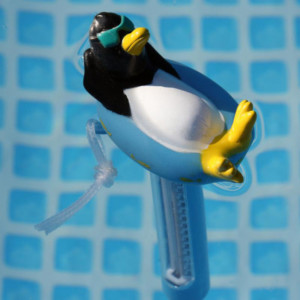90
When will it be Warm Enough to Swim?

We have been asked quite a few times this year, “When will it be warm enough to swim?” Although pool water temperatures are currently averaging around 75 degrees in the pools that we monitor, it is still too cold for some to comfortably swim. What some consider comfortable might still be too cold for others and vice versa—everyone is different. But following is a fairly good summary of pool water temperatures:
Competitive swimming
Most competitive swimmers like the water to be fairly cold, somewhere in the low to mid 70’s, depending on the intensity of the training. At these temperatures, the water will feel cold initially but once training begins, the body will heat up.
Lap swimming for exercise
Most lap swimmers like the water temperature to be somewhere between 75-80 degrees. Being active by swimming laps will cause the body to heat up fairly quickly.
Denton area swimming
We seem to hear quite a few comments about 80-84 being just cool enough to be refreshing, but not too warm. It might seem cold when you first get in, but then it gets comfortable.
Casual swimming
Most casual swimming pool users like the water in the 84-86 degree range. Many hotels and resorts typically try to maintain their pool water temperature in this range.
Warm water swimming
There are some people that like the water to be in the low 90’s before they are real comfortable in the water. Many pools in the north Texas area, especially pools without shade, reach the low 90’s in July and August.
Our first average 100-degree day is still a few weeks away—July 1st. By that time the water will be warm enough for all of us and we likely be enjoying “warm water swimming”.



